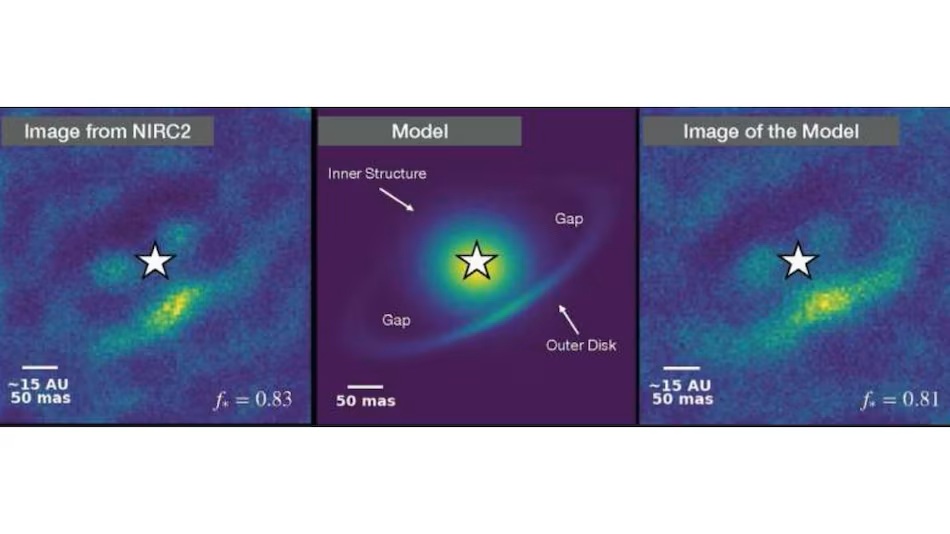Astronomers capture detailed infrared images of HD 34282’s planet-forming disk
It may be hard to picture a planet as a newborn in a nursery, but astronomers have just observed one of the factories where these celestial objects are formed. The scientists used the powerful Keck Observatory to study such a region: the HD 34282 system, a star in the Chamaeleon constellation located “just” 400 light-years from Earth.
HD 34282 is a “young” star enveloped by what gives it away as a site where planets are formed: a transition disk. The surrounding structure is a dense ring of gas that scientists believe is carved and shaped by planets in development.
With the help of Keck’s NIRC2 infrared camera, astronomers produced one of the most detailed images ever made of the inner region of the disk surrounding the HD 34282 star. The photograph revealed clumpy patterns and brightness variations inside the disk, a telltale sign that dust and gas are coalescing into the core components of planets.
A clear gap shows where a baby planet may be forming
According to the study, the materials surrounding HD 34282 can be classified as an inner dusty envelope and an outer disk. The two regions are separated by a gap that is 40 AU wide, or about the distance between the sun and Neptune.
The scientists stated that the gap usually forms when a planet in growing pains attracts materials in close proximity, thereby creating a path along its orbit around its star.
The luminous clumpy patterns and uneven textures observed on the disk also suggest that a developing planet may be actively pulling in matter. This process, known as accretion, is recognized as the earliest stage of a planet’s lifecycle.
Why the discovery is rare and scientifically important
Spotting a planet in active development is no mean feat. In fact, only two planets (PDS 70 b and PDS 70 c) have ever been photographed while inside their birth disks. The rarity of the clues presented by HD 34282 makes them invaluable.
Other star systems, such as HL Tau, have similar disks that could imply they are breeding grounds for planets. However, HD 34282 may be the clearest real-time glimpses into planet formation we have ever seen, even though no actual planet was observed.
What is next: watching a planet being born?
The scientists say they continue to study HD 34282 with even more modern instruments, such as the upcoming Keck SCALES imager. They hope to track the complete process of planet formation, helping us to better understand how worlds like our Earth came into existence.
 David Odejide – Tech Writer – 327 articles published on Notebookcheck since 2024
David Odejide – Tech Writer – 327 articles published on Notebookcheck since 2024
I am a writer and software developer with a background in Mechanical Engineering and a distinction MSc in Environmental Management (Energy). My career spans fullstack development (building desktop, web, and Android apps for enterprise clients), Content Strategist/Business Developer in the solar industry, and writing research-driven articles on electric vehicles, renewable energy, and consumer tech.
I previously ran WindowsFoneFans (remember when Windows phones were a thing?) as a social media hub for Windows phone enthusiasts. My work includes hundreds of video scripts on EVs and sustainability, with over 100 million views on YouTube. I also write about chipsets, mobile hardware, and emerging IT trends, drawing on years of hands-on development experience.
Whether it is decoding Snapdragon nodes or analyzing offshore wind policy, I aim to deliver content that is both technically sound and widely accessible. In my spare time, I manage one of the largest LinkedIn groups for wind energy professionals and enjoy getting lost in Scotland’s natural beauty.

